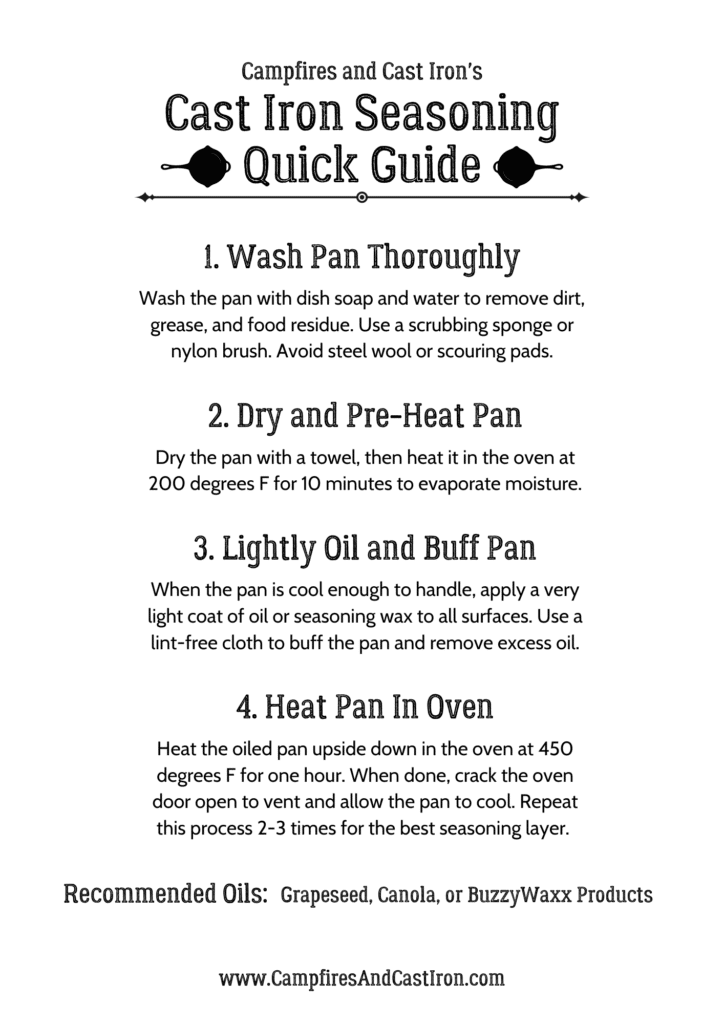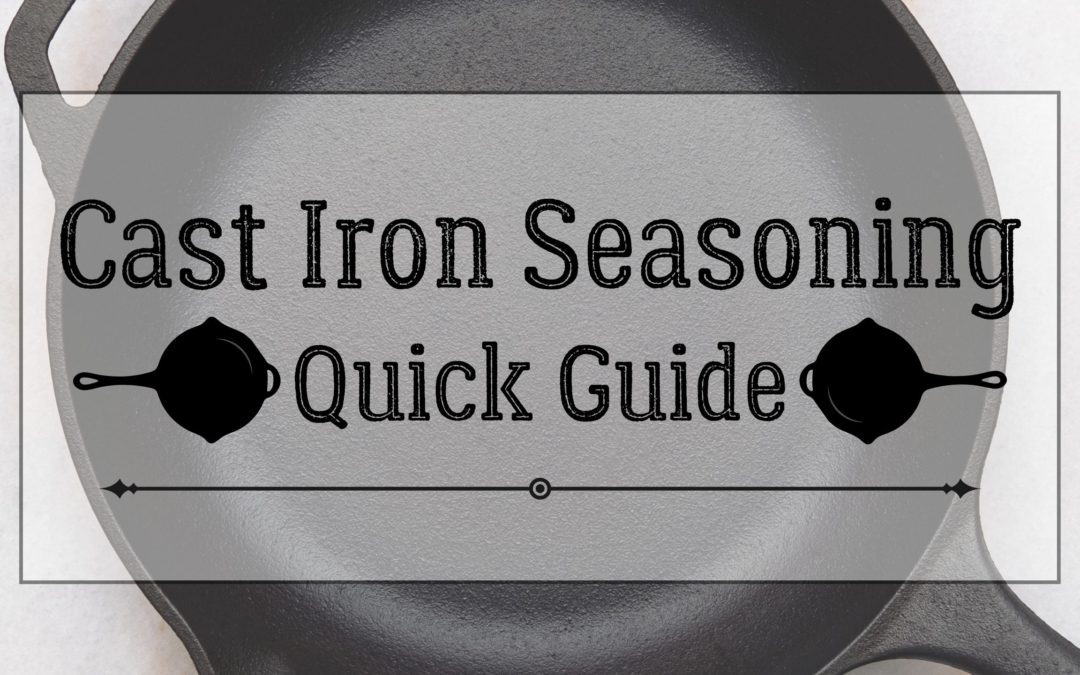Last updated on June 26th, 2023
Seasoning cast iron cookware can seem confusing or intimidating at first, but it’s really quite simple! I often get questions about the cast iron seasoning process, so I decided to make a quick reference guide that you can print and keep nearby in the kitchen.
In addition, I’ll briefly answer some common questions about seasoning. Feel free to check out my full-length article, “Seasoning Cast Iron Cookware: A Step-By-Step Guide,” for more detailed information about cast iron seasoning, care, and troubleshooting.
What Is Seasoning?
Cast iron seasoning is essentially multiple thin layers of oil baked onto the surface of the pan. This is done at a high temperature, which causes the liquid oil to bond with the iron on a molecular level and transform into a slick, hard surface through a process called polymerization. This creates the smooth, easy-release finish you want on a cast iron pan.
How Often Should I Season My Cast Iron Cookware?
Many new cast iron pans come with a thin layer of seasoning straight from the factory and are labeled as “pre-seasoned.” However, I always suggest adding an additional two to three layers of seasoning on new, pre-seasoned cast iron. This will help prevent food from sticking and make cleaning easier.
Once your cast iron cookware has been seasoned initially, it really only needs to be seasoned again a few times per year. Typically, a cast iron pan with a strong base layer of seasoning will continue to improve with use over time. However, there are a few instances where you’d want to re-season a pan, such as if it is beginning to appear rusty or dull grey in color, if you notice food sticking to the pan, or if you’ve cooked acidic foods or boiled water for a long period of time (think simmering homemade marinara sauce), as this can eat away at the seasoning layer.
Which Oils Are Best For Seasoning Cast Iron?
My top three favorite oils for achieving the best seasoning are:
- BuzzyWaxx – I have been using BuzzyWaxx over the past year, and it has quickly become my favorite way to season my cast iron. BuzzyWaxx is a blend of seasoning oil and beeswax. It comes in either a wax disc or a metal tin, and it’s super easy to work with. The wax is very easy to apply and buff into the cast iron and yields fantastic, even seasoning results.
- Grapeseed Oil – The fat profile of Grapeseed oil makes it another excellent choice for building a strong, uniform seasoning layer. I use this brand with good results.
- Canola Oil – While Canola oil appears to be an obvious choice based on its fat profile, it’s important to note that most cheap Canola contains impurities that can cause stickiness or streaking on cast iron. Make sure to use a high-quality oil, or opt for the Lodge Seasoning Spray, which is 100% Canola oil without additives or propellants.
A Quick Guide To Seasoning Cast Iron
1. Wash The Pan Thoroughly
Wash the pan with dish soap and water to remove dirt, grease, and food residue. Use a scrubbing sponge or nylon brush. Avoid steel wool or scouring pads.
2. Dry and Pre-Heat The Pan
Dry the pan with a towel, then heat it in the oven at 200 degrees F for 10 minutes to evaporate moisture.
3. Lightly Oil and Buff The Pan
When the pan is cool enough to handle, apply a very light coat of oil or seasoning wax to all surfaces. Use a lint-free cloth to buff the pan and remove excess oil.
4. Heat The Pan In The Oven
Heat the oiled pan upside down in the oven at 450 degrees F for one hour. When done, crack the oven door open to vent and allow the pan to cool. Repeat this process 2-3 times for the best seasoning layer.
Printable Infographic
Feel free to download and print my helpful seasoning quick guide!

This post may contain affiliate links. This means if you click on a link and make a purchase, I will receive a small commission, at no cost to you, that makes it possible for me to keep the Campfires and Cast Iron site up and running. Please see our disclosure policy for details.



Very interesting and helpful. Thank you
Thank you! Glad you found it helpful!